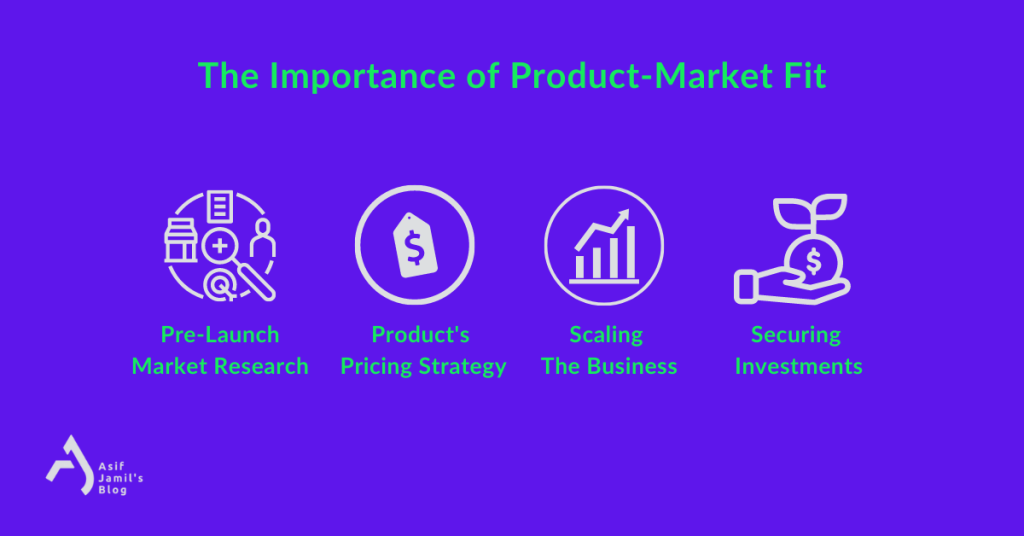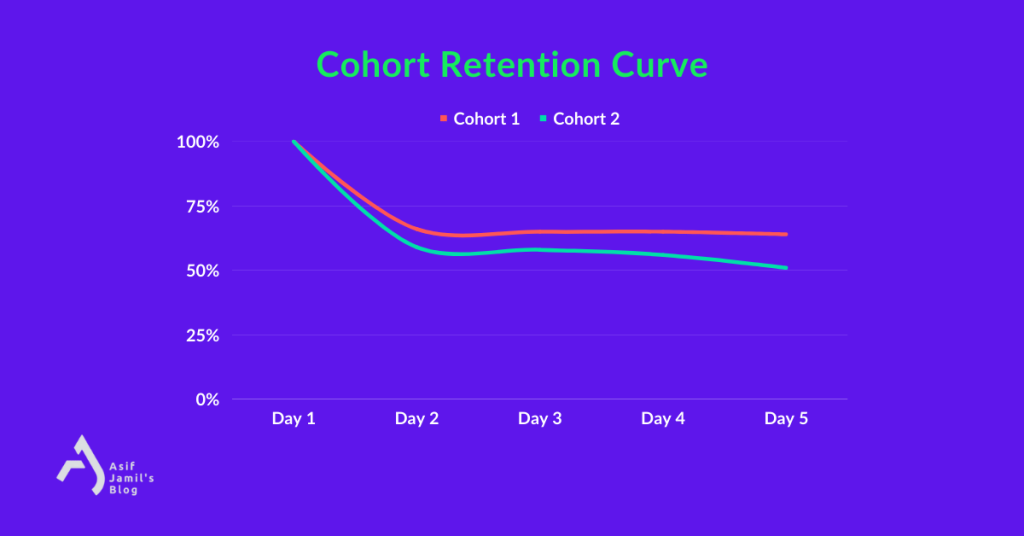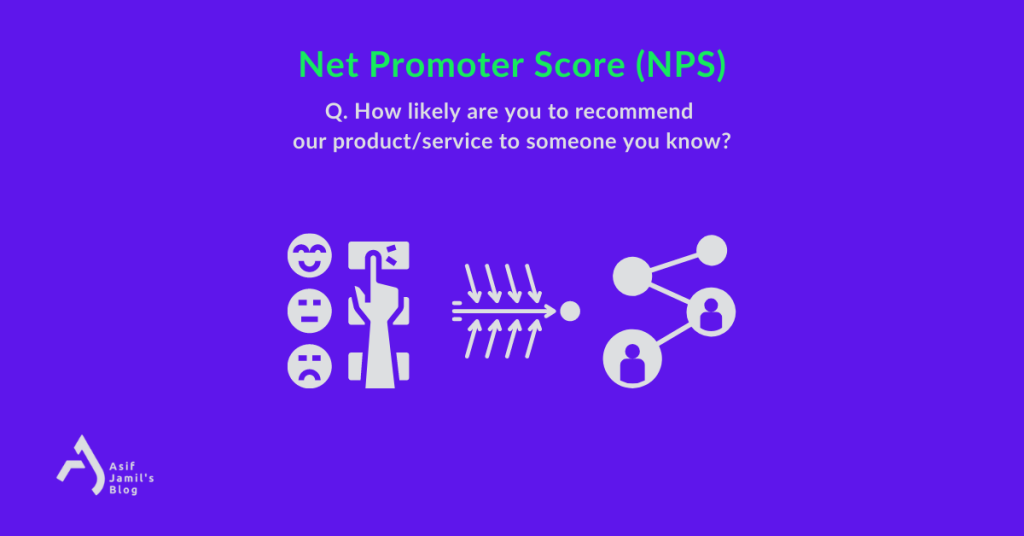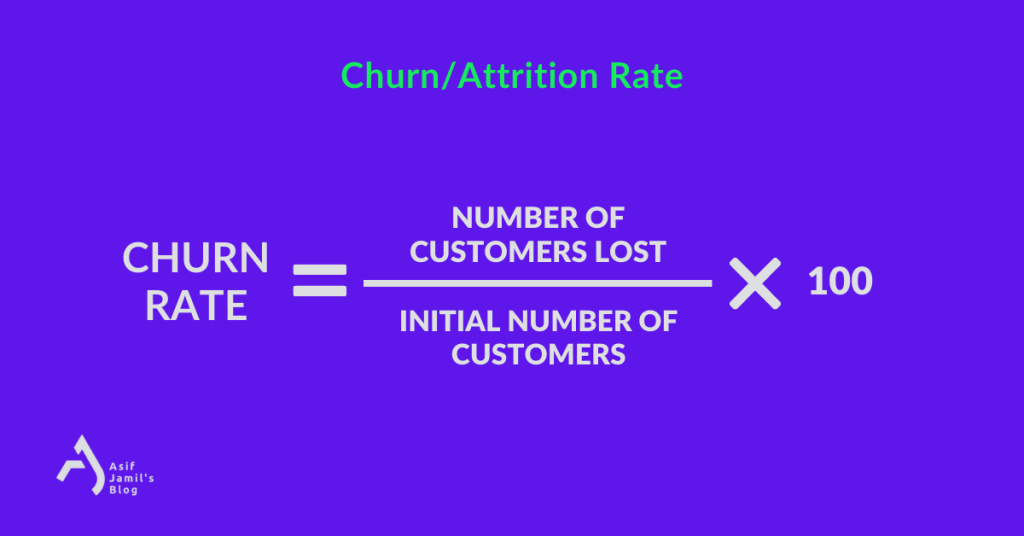Before launching a new product or planning to scale it, you’ll want to ensure it has enough market demand to succeed. This can be quite a challenge, particularly if there are other similar products on the market. You may also lack insider knowledge of your target customers, their purchasing habits, and what problems they need solving!
Fortunately, there are several methods you can use to get a sense of how receptive your target audience will be to your new offering to them.
Among those, one of the most effective techniques is measuring product market fit. Read on to learn more about how to assess product market fit and how it can help you secure a position for your product in its market.
What is Product-Market Fit?
Product-market fit can be difficult to define, but you’ll know when you have it!
Confused?
Product market fit explained
While there is no “one-size-fits-all definition” of product-market fit, there are some key criteria that can help you determine whether or not you have achieved this important milestone. So, in short —
Described as “when a product is useful enough its target customers that it properly serves their needs”, product-market fit is essentially the point at which a product has a ‘must-have’ factor to its userbase.
The product-market fit framework is the core concept behind product validation. That’s why it’s so critical to the long-term success of any new product or service!
Now, before we learn how to measure product-market fit, there’s another question that needs answering…
Why is Product-Market Fit Important?
I’ve been going on and on about how to define as well as how to find product-market fit. But some may still wonder — why is this one metric considered to be so much of a big deal?

To clear the confusion once and for all, here are the reasons behind the importance of achieving product-market fit
- When you launch a new product, it can be hard to tell how successful it’ll be. Without enough research on the market and its demands, your product will fall flat — no matter how much quality it brings to the table!
And that’s where the product/market fit comes in! It prepares you beforehand on what to expect from the potential users and how to behave on their feedback. You can do a soft launch or make a free version of your product, check if it reaches the product-market fit, and have valid reasons to continue the project! - Fixing the right price point for your product is always a headache. You don’t want to scare off your leads with an out-of-reach price to pay. On the other hand, a price too low may give a cheap knockoff vibe. That’s why you want your product to be priced just right!
Product-market fit, along with other tests like the SWOT analysis, helps you find that suit spot to attract enough people to give you traction without losing the credibility of your product. - Scaling the production of a product is not child’s play! How would you know if your product is already serving a wider audience than it should have? Alternatively, confining your product to a specific niche could also be the case. Without this information, it’s nearly impossible to come up with a solid plan for scaling the product.
That’s why it is important to know whether your product has achieved its product-market fit or not. If it’s able to secure enough profit by selling to the current audience size, you are likely on the right track. If not, you can make some adjustments to try and achieve product-market fit. - Securing investments for the future of your product relies heavily on Product-Market Fit. Angel investors, VCs, and all stakeholders alike want to see if your product fits into the market or not before they can make the next steps. The easiest way of demonstrating this potential in your product is to measure the product market fit.
Are you convinced now to learn how to calculate product market fit?
Let me help you along the way
How to Measure Product Market Fit
Let’s clear something right off the bat!
There is NO definitive method or metric to precisely measure the product market fit for a specific product. Hence, the product-market fit framework requires a combination of different methods to get a clear picture.
Among the countless different product market fit metrics, I’ll be discussing the 6 most popular and reliable ones. Let’s jump right into them one by one:
1. The Sean Ellis Test
Sean Ellis is best known for ✌️ two things — his groundbreaking book called “Hacking Growth: How Today’s Fastest-Growing Companies Drive Breakout Success”, and also for coining the term “Growth Hacking”.
But for people who build and grow products, Sean Ellis is known to them for a test named after him. Also known as the “40% test”, the Sean Ellis test is a simplistic approach to finding if a product has reached product-market fit or not. The benchmark on this test is 40% — which Sean came up with after rigorous tests were run on literally hundreds of startups and compared the results.
Here’s how to measure product market fit using the Sean Ellis test:
Step 1: Find a segment from your customers for the test. Here’re the criteria recommended by Sean Ellis for choosing the ideal demographic from your customer base for the survey:
- Thoroughly experienced the product first-hand
- Used the product at least twice
- Used the product in the two weeks prior to the survey
Step 2: Ask them the following question:
How would you feel if you could no longer use our product/service?
There would be choices for the answer, namely:
- Very disappointed
- Somewhat disappointed
- Not disappointed
- I no longer use this product
Step 3: Now, take all the submissions of this survey and calculate the percentage voting for the option “Very Disappointed”.
If the score is greater than or equal to 40, Sean Ellis claims (with enough evidence) that the product has reached its product-market fit.
This shows that a large chunk of your users will actually miss the product if it goes off the grid.
But if it’s below 40, your product has a piece of bad news for you ⚠️

What makes this test stand out is its simplicity and authenticity! Sending a simple survey using an online form/survey builder is as easy as it gets. ⚡
On top of that, the data fetched from this test is authentic as your first-hand customers are the ones giving the feedback.
That’s why the Sean Ellis test/the 40% test is still widely regarded as a reliable benchmark for evaluating product-market fit!
2. LTV/CAC Ratio
Before going into detail on the ratio and learning how to measure product-market fit using it, let’s try to understand what LTV and CAC actually are.
✅ LTV stands for the Lifetime Value of a customer. It indicates the total amount of money a customer will spend on your product/service throughout your relationship. This is mainly based on historical data as well as some forecasts and predictions.
✅ CAC, on the other hand, means Customer Acquisition Cost. It’s the average value of how much your business spends on acquiring or onboarding a new customer.
Their ratio, that is LTV/CAC, draws a vivid picture of the cash flow of your company. You’ll get to see how much money you’re making from your customers in relation to how much you spent on them. If the value is positive, your business is a profitable one.

Additionally, many have agreed that a positive LTV/CAC ratio is also an indicator of reaching product market fit for a particular market segment. If your product is acquiring customers at a low cost, getting higher value in return, and resultantly has an excellent LTV/CAC ratio, then bingo! Your product has surely made positive feedback to people’s lives.
But beware, you must consider other metrics before you jump to any conclusion here.
3. Cohort Retention Rate
You need this metric if you want to learn how to measure product market fit, and this metric needs the retention curve to function. The retention curve shows you the retention rate of your business and visualizes how effective your solution is to the customers.
While the core idea remains the same, the retention rate can vary from product to product. If it’s a SaaS application, the retention rate will be primarily judged by the average percentage of daily active users. For some businesses/niches, the rate is the number/percentage of users who uses/pays for the product after using it for a certain amount of time.
The gist remains the same —
Retention rate is simply how many customers you’ve been holding for a specific period.
Bringing cohort analysis into the mix only makes it better! This way, customers are segmented into cohorts/groups so that you get large chunks of data which is also unbiased. Additionally, you can update the cohorts frequently without any hassle and resultantly, fresh new values for your retention curve.

The above graph shows two cohorts head-to-head along with their retention data over the period of 5 days. Notice how cohort 1 is somewhat steady in retaining customers after day 2, while the 2nd cohort is a bit unstable after day 4. Although 5-day data is not enough for any kind of interpretation, it’s safe to say that cohort 1 is performing better in terms of product-market fit.
Keeping the curve above a certain level or a horizontal line parallel to the X-axis after a set amount of days is the target here — that’s your reliable signal of having achieved product-market fit. But if the curve gradually declines or constantly remains below the line, you and your product need a reality check!
4. Net Promoter Score (NPS)
This might be the most renowned metric on this list! NPS, or the net promoter score, is widely used to measure customer satisfaction with a product/service as well as how likely it is that your customers become your advocate/promoter. ️
More specifically, it’s a benchmark for evaluating how likely your customers are to recommend your product/service to others (friends, family, colleagues, acquaintances, etc.).
The most common question to assess the NPS is:
On a scale of 0 to 10, how likely are you to recommend our product/service to a friend, family member, or colleague?

As you can see from the question above, the assessment is “quantitative” and gives you a numeric value with each input.
So, the steps of how to calculate NPS (Net Promoter Score) are:
- Step 1: Conduct a survey among your customers with a question like the above one (On a scale of 0 to 10, how likely are you to recommend our product/service/brand to a friend, family member, or colleague?)
- Step 2: Take all your inputs and categorize your customers into three segments according to their responses. Those who gave you scores 0-6 are Detractors, scores 7-8 are Passives, and most importantly, scores 9-10 are Promoters.
- Step 3: Calculate the percentages of the detractors and the promoters for your business.
- Step 4: Subtract the percentage of detractors from the percentage of promoters. Note that the number/percentage of passives is ignored here.
The final result will be a number ranging from -100 to 100, which will be the net promoter score of your business. And as you can guess, the higher the better.
What this NPS score tells you is that:
✅ How satisfied are your existing customers
✅ How loyal they are to your product/service
✅ How likely is it that they’ll bring in new customers via word of mouth
✅ How many of your customers (detractors) need attention and reaching out to
✅ If you’ve reached the product-market fit or not
So, if your NPS score is up to a certain standard (which varies depending upon the industry/niche), you can get a rough idea that the product-market fit has been reached.
5. Churn Rate
Churn rate, also known as attrition rate, tells you at which rate you’re losing customers in a period. It’s a vital business metric for evaluating the dissatisfaction of your customers as well as the market share your product/service is losing.
Here is the formula to calculate the churn rate of your business:
Churn rate = (Lost Customers ÷ Total Customers at the Beginning) x 100

Combined with other metrics for product market fit (maybe the NPS) on the list, the churn rate is capable of telling you if your customers are happy or not.
If the combined result is negative, you can conclude that the product-market fit hasn’t been met.
6. CSAT (Customer Satisfaction)
This is another survey to assess the product market fit. The only difference is that CSAT directly addresses the satisfaction of a customer without being subtle like the previously mentioned tests.
The procedure is the same as before — ask your customers a question and analyze the survey result. This time, the question is:
How satisfied are you with our product/service, on a scale from 1 to 5?
The options to vote are as follows, along with their respective scores —
- Very Unsatisfied (1)
- Unsatisfied (2)
- Neutral (3)
- Satisfied (4)
- Very Satisfied (5)

Now, there are two ways to calculate the CSAT of your product/service after you finish collecting the data.
1st Method: Sum of All Responses
- Step 1: Sum the respective scores of all responses to the survey
- Step 2: Calculate the maximum possible score you can get. As the highest score is 5 (very satisfied), the maximum possible cumulative score will be 5 multiplied by the total number of responses.
- Step 3: Now, divide the sum of all responses by the sum of the maximum possible scores. After that, multiply the result by 100.
2nd Method: Sum of Positive Responses
- Step 1: Sum the number of happy/positive respondents to the survey. Although the best practice is to sum the number of responses that are either satisfied or very satisfied, you can customize the survey by only taking the “very satisfied” responses.
- Step 2: Now, add the total number of respondents to the survey.
- Step 3: Finally, divide the number of positive responses by the sum of the total respondents. After that, multiply the result by 100.
The final percentage from either one of the methods of CSAT is a quantitative representation of your customer satisfaction. The higher the score, the more satisfied your customers are!
Accordingly, it can also be interpreted to understand how much product-market fit you’ve achieved thus far.
Then it’s time to read the differences between ROI and ROAS
while also learning when to use which one!
And now… time to address the elephant in the room!
How to Measure Product Market Fit Accurately
After going through all the different techniques and metrics discussed here, you must wonder how to find product-market fit definitively and accurately.
Now, there’s no “definitive” way/method to measure product market fit.
Product-market fit is not a metric you can “precisely” measure, and that’s not even the point of measuring it.
But, you can always opt for more accuracy with your product market fit assessment.
☑️ The best way to measure product-market fit is to combine 2 or more methods to get a clearer view. That way, you won’t be blindly relying on a single metric.
For example, if you go for a combination of CSAT & NPS, the data you acquire is far more accurate.
My personal favorite combination to determine product market fit is a mix of the LTV/CAC ratio, the Sean Ellis test, and the Churn Rate.
Because this product market fit score combination shows me —
✔️ If the product is actually solving the problems of the target group
✔️ How many loyal customers does the product currently have
✔️ If the product is losing customers at a healthy rate or not
✔️ How profitable customer acquisition is in the long term
… all under the same roof.
This way, for me, the final result is a relatively accurate demonstration of a product’s journey toward reaching its product-market fit!
Common Myths Around Product-Market Fit

There are several common misconceptions and myths about product-market fit that needs to be debunked once and for all! I’ll go through them one by one:
Myth #1: Product-Market Fit is Constant
One thing that everybody should acknowledge is that product-market fit is NOT a single event. You can not achieve it just once and expect that your product will rule the world for eternity! ⚠️
Instead, product-market fit is a continual process that you should continue to monitor and refine over time. Much like all the factors that impact a market, product-market fit for a certain product is also a variable. The tests must be run from time to time, and also with variations among the different methods available.
Myth #2: Product-Market Fit = Success!
Another misconception is that achieving product-market fit is an indication of having a successful product. While the importance of product-market fit is undeniable, many other factors determine the long-term success of a product.
Also, as mentioned above, hitting product-market fit is not something concrete. You can also lose it within a month or so, under different circumstances and shifts in the market.
So, success and product-market fit are not synonymous!
Myth #3: Product-Market Fit Means Growth
While achieving product-market fit indicates a place in the market and among the audience for your product, it DOES NOT guarantee growth. It also doesn’t imply that your product will be wildly successful or viral.
Product-Market Fit simply means that there is sufficient demand for your product to sustain itself.
Scaling, sustainability in demand, profitability — these are some of the many metrics that a product needs for growth and staying in business. Product-market fit may be an early indicator for that, but that’s not the bottom line!
Here’s the actual bottom line
Bottom Line
That brings us to the end of today’s discussion on how to find product-market fit for a product/service.
You can check out the FAQs below for some quick Q&A on how to measure product market fit.
Or, you can ask questions and/or voice your opinions in the comment section. I’ll be waiting to reply
Click here and see all my previous articles on topics ranging from marketing, branding, psychology, copywriting, contemporary society, WordPress, personal finance, cinema, to everything in between.
FAQs on Measuring Product-Market Fit
Q. What are the best questions to identify product market fit (PMF)?
Ans.
1. How would you feel if you could no longer use our product/service?
2. How satisfied are you with your experience with our product/service?
3. What were the motivating factors behind using the product/service?
4. How likely are you to recommend our product/service to a friend, family member, or colleague?
5. Why are you using the product as opposed to other solutions in the market?
… among other questions. But these 5 questions will suffice for starters!
Q. Is Net Promoter Score (NPS) a good way to measure Product Market Fit?
Ans.
NPS or Net Promoter Score is one of many surveys/tests popular for measuring product market fit. But NPS alone can’t guarantee you anything reliable. You have to combine multiple metrics and methods to determine the product-market fit.
Q. What are the key indicators of product market fit?
Ans.
Low churn rate, high retention rate, high amount of referrals, a positive LTV/CAC ratio, etc. are some of many key indicators of achieving product market fit.
Although multiple tests and metrics should be combined and considered to get an accurate picture of your product/service.
How do you measure product market fit?
Ans.
While there are misconceptions about this matter, the answer is rather simple!
There are different metrics to measure product-market fit and various methods too! But if you want to assess product market fit with accuracy, you MUST use a combination of multiple methods.
Go through this blog post to see the effective ones and how to combine them for optimal results.





I agree with your point of view, your article has given me a lot of help and benefited me a lot. Thanks. Hope you continue to write such excellent articles.